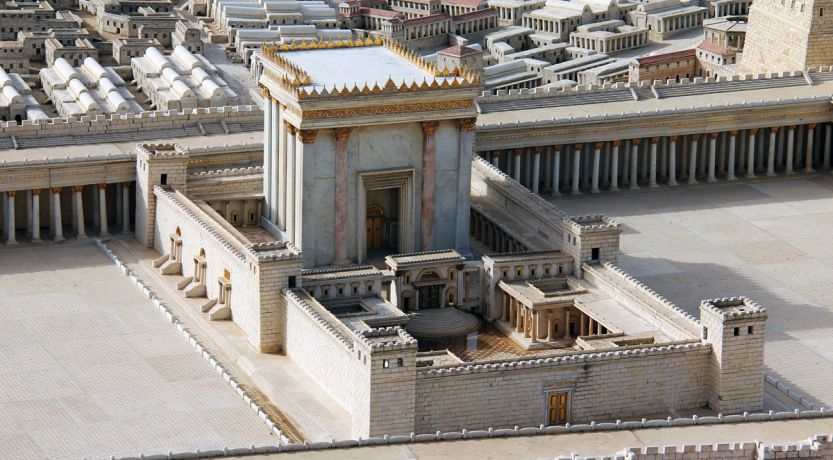Jesus’ longest recorded talk on prophecy was given on the Mount of Olives not long before His arrest and crucifixion. To really understand this prophecy, we must first explore its background and context.
Most people think of Jesus as a great teacher or the prophesied Messiah or as the Son of God. And He certainly was all those things.
But He was also something else that is not considered as much: He was a Prophet.
Throughout His ministry, He prophesied many things that came to pass in His lifetime. For instance, He accurately prophesied His own death and resurrection and that one of His leading disciples, Peter, would deny Him three times.
But He didn’t just predict events of His time. He also prophesied things that would occur many years in the future.
His longest and most detailed prophecy was given just days before He was arrested, tried and crucified. It has come to be known as the Olivet Prophecy because it was given on the Mount of Olives (or Olivet). This article begins a series taking a closer look at these prophecies. In this article, we will explore some of the background to this fascinating prophetic discourse.
A conversation about the temple
The Mount of Olives is located on the east side of Jerusalem and, at the time of Christ, directly overlooked the majestic and beautiful temple complex that Herod had begun remodeling several decades earlier.
When in Jerusalem, Jesus would often end a long day by heading up the Mount of Olives and retiring there for the night with His disciples.
The Gospels of Matthew, Mark and Luke record the prophecies He gave on that mountain a few days before His final Passover and the events leading to His arrest and crucifixion. He had just spent the day in the temple, which included, as it often did, heated confrontations with the scribes and Pharisees (Matthew 22 and 23).
After those tense exchanges ended and the day was drawing to close, the conversations among His disciples turned to the temple complex itself. They started discussing the buildings and admiring the ornateness and beauty of the architecture (Matthew 24:1; Luke 21:5).
Herod’s temple complex was still a work in progress that wouldn’t be completely finished for about 30 more years. Perhaps the disciples were admiring a specific portion of the complex that had recently been completed. It is interesting that the Gospel writers point out the disciples’ fascination with the stones of the temple complex. Mark records them saying to Jesus, “Teacher, see what manner of stones and what buildings are here!” (Mark 13:1).
The stones of Herod’s temple were enormous and impressive even by modern standards. Limestone was quarried locally and fashioned by skilled stonecutters into massive rectangular blocks that fit together almost perfectly. Because they fit so well, no mortar was needed to seal or reinforce them. Most of these stones weighed in the tons and averaged about 4 feet high by 10 feet in length.
I write this just after having returned from a trip to Jerusalem where we saw many of the Herodian stones of the platform on which the temple was built. What is fascinating is that 2,000 years later, guides and tourists still gaze at these stones in admiration and wonder just how they were moved and put perfectly in place!
The comment that shocked the disciples
Whatever their reasons for discussing the impressiveness of the temple, what Jesus said next was not what the disciples expected. Instead of joining them in “oohing and aahing” over the beautiful structure, He made a statement that was shocking and probably somewhat deflating to them:
“These things which you see—the days will come in which not one stone shall be left upon another that shall not be thrown down” (Luke 21:6).
“Tell us, when will these things be? And what will be the sign of Your coming, and of the end of the age?” (Matthew 24:3).
Here was the Man they were convinced was the Messiah proclaiming that the most important structure in their country and religion was going to be completely destroyed. This was undoubtedly disturbing. The pain of the Babylonian destruction of Solomon’s temple and the thankfulness for the rebuilt second temple were still very much a part of the Jewish consciousness.
The idea of losing the rebuilt and refurbished temple was unthinkable. Especially coming from the Man they expected would restore Israel’s glory and expel the Romans! But it wasn’t just the national and spiritual implications of what He was saying that shocked them, it was also the logistics of those massive stones they thought were so impressive being “thrown down.”
This, of course, did happen almost 40 years later when the Romans conquered Jerusalem and destroyed the temple under the command of Titus. (The temple itself was destroyed totally—not one stone was left upon another, but some foundational stones that were not part of the temple still remain and can be seen today.)
You can imagine the disciples following Jesus up the mountain in silence, somewhat discouraged and pondering what He had said about the temple being destroyed. They were starting to realize that what they had thought Jesus would do—restore the kingdom of Israel, expel the Romans and rule from Jerusalem—was not going to happen immediately, as they had hoped.
When will these things be?
So, when they finally got up the mountain, four of the disciples (Mark 13:3) approached Jesus privately and asked Him the question that had been nagging at them:
“Tell us, when will these things be? And what will be the sign of Your coming, and of the end of the age?” (Matthew 24:3).
This question represented one of the rare moments when the disciples seemed to grasp that Jesus the Messiah wasn’t coming to rule Israel at that time. Perhaps they wanted a simple, short answer. Instead, Jesus gave them what has come to be known as the Olivet Prophecy. In fact, it is the longest answer Jesus gave to a question recorded in the Gospels.
His answer not only dealt with the signs—both general and specific—that would precede His second coming, but also covered spiritual warnings for His people in the end times.
In our next issue, we will begin taking a closer look at some of the most interesting—and surprising—parts of Jesus’ answer to them.
See the next article in the series at “Part 2: The Rise of Counterfeit Christianity.”






